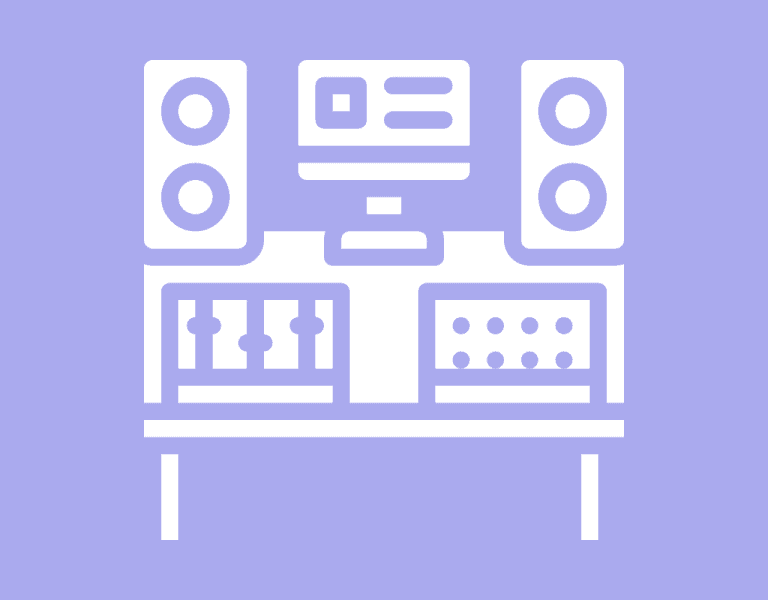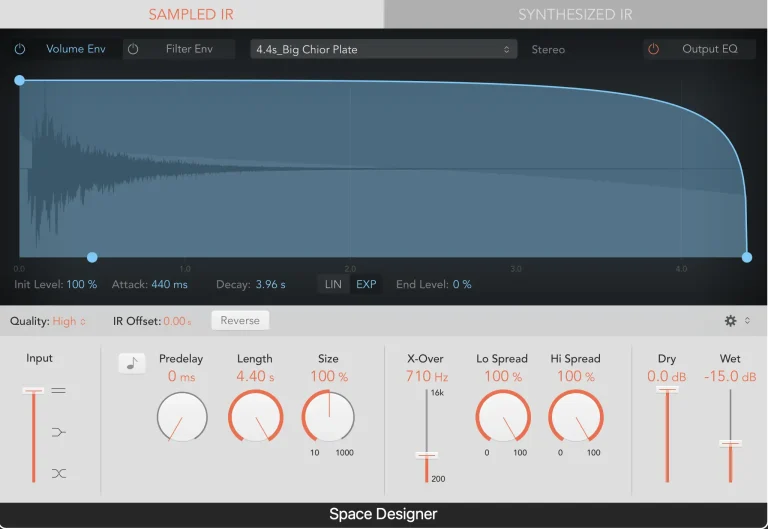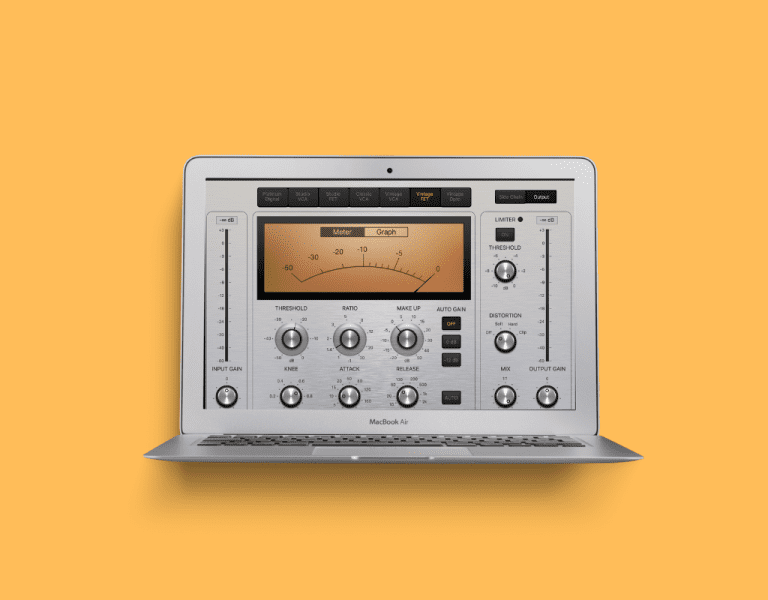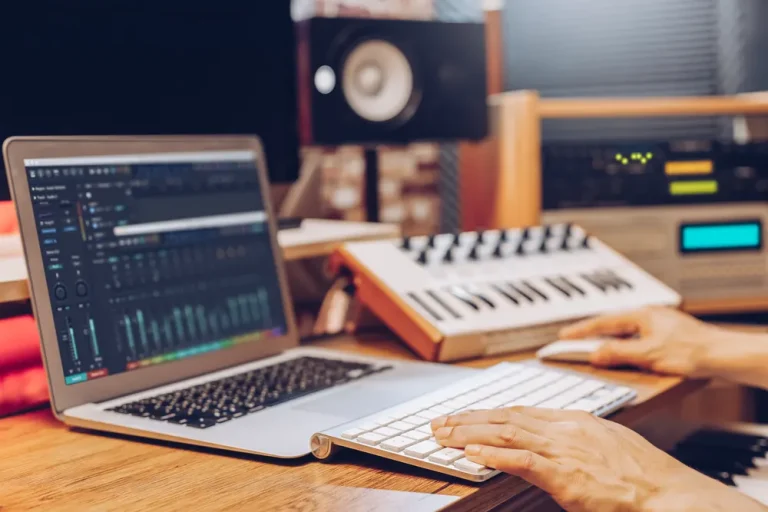Should You Mix in Mono? (5 Reasons Why)
When it comes to mixing music, you might be used to working in stereo. But have you ever considered doing a mix in mono? Embracing this approach can lead to significant improvements in your mixes. In this article, we’ll explore five compelling reasons why you should try mixing in mono.
Mono mixing might seem counterintuitive at first, but you’ll soon discover its powerful advantages. From better balance and clarity to enhanced compatibility across various playback systems, mixing in mono can level up your production game.
Fundamentals of Mono Mixing
Mono mixing focuses on creating a balanced mix using only one channel or speaker rather than using separate channels for the left and right speakers in a stereo mix. This can help you identify potential problems in your mix and ensure that it sounds great across all listening environments. Here are a few key concepts to understand when mixing in mono:
Frequency Clashes: Mixing in mono makes it easier to identify and resolve frequency clashes since all elements are coming through a single channel. Pay attention to potential conflicts between instruments or sounds in your mix, and use tools such as equalization to carve out space for each element.
Phase Issues: Mono mixing can help you detect phase issues between different waveforms, as mentioned on The Mixing Tips. When mixing in mono, make sure that all elements come through clearly without any destructive interference or phase cancelation.
- Balance: In a mono mix, you’ll need to carefully balance elements to achieve a good mix. This includes adjusting levels, panning, and/or equalization to ensure that each sound is present and clear.
- Dynamic Range: Your mix should maintain an appropriate dynamic range without overcompressing or limiting. This means that loud and quiet elements should remain balanced, making it easy for listeners to hear all parts of the mix.
- Mono Compatibility: Ensuring that your mix translates well to mono playback is crucial since many listening environments, such as smartphones or certain speaker systems, use mono output. Mixing in mono from the beginning can help you achieve better compatibility.
When working with mono mixes, it’s important to keep these factors in mind and make necessary adjustments as you experiment with the different elements of your mix. This approach will help you create a balanced and clear mix that sounds great across a variety of playback systems.
Reason 1: Improved Phase Coherence
Mixing in mono can greatly improve phase coherence in your mixes. Due to multiple tracks playing simultaneously, some signals might cancel each other out or become less apparent. With phase coherence intact, you ensure that all your elements are working together in harmony.
When you mix in mono, you make it easier to identify and address any phase-related issues. In a stereo mix, such problems can be hidden by panning and other spatial effects. However, mono helps reveal these issues, enabling you to better understand and control the relationship between different elements. This will lead to a more balanced and clearer mix once it’s played back in stereo.
Here are some ways to improve phase coherence while mixing in mono:
- Listen carefully to the low-frequency content of your mix, as these elements are typically more susceptible to phase problems.
- Utilize polarity inversion and time alignment tools when needed to correct phase issues.
- Keep bass-heavy elements like kick drums and bass guitars in mono to maintain a solid low-end foundation.
Mixing in mono empowers you to make more informed decisions as you focus on important aspects such as frequency balance and phase coherence. As a result, when you eventually switch back to stereo, you’ll be pleasantly surprised with how well your mix translates in different playback scenarios.
Reason 2: Enhanced Focus on Levels and Balance
When you mix in mono, it forces you to pay closer attention to the levels and balance of each element in your mix. Since all the sounds are coming from a single channel, it becomes essential to ensure that the individual elements do not compete with each other or become lost in the mix.
Mixing in mono encourages you to make more informed decisions about volume levels and the place of each instrument in the mix. As you adjust the levels, you may notice some elements are too loud or too soft, allowing you to create a more balanced mix. By concentrating on the levels, you can build a more cohesive and well-rounded sound.
Why it matters:
- Ensures a balanced mix: By focusing on the levels of each element in the mix, you can create a more cohesive sound, where each part contributes equally.
- Helps identify conflicting elements: If two or more elements are competing for the same space in the mix, mixing in mono can help you pinpoint and resolve these conflicts.
- Improves translation across different playback systems: A balanced mix will sound better on various speaker systems, ensuring your music reaches more listeners as intended.
To further enhance your focus on levels and balance, consider using tools like EQ and time-based effects (reverb and delay) in your mix. These techniques can help to further refine your sound and provide a distinct space for each element in the mix.
Remember, mixing in mono can help you achieve a more balanced and professional-sounding mix by forcing you to focus on the essential aspects of levels and balance. By doing so, your music will not only sound better, but also translate well across different playback systems, reaching a wider audience.
Reason 3: Ensuring Compatibility with Mono Playback Systems
When you mix in mono, you’re giving your music a higher chance of sounding great on mono playback systems. Mono compatibility is essential because various devices, such as smartphones, PA systems, and Bluetooth speakers, play audio in mono. Mixing in mono ensures that your mix sounds balanced and maintains integrity across different playback systems.
By mixing in mono, you can observe and handle phase issues effectively. Phase problems tend to be less noticeable in stereo mixes but become evident when your mix is summed to mono. By addressing these issues early on, you are creating a solid foundation for your mix and preventing potential problems down the line.
While mixing in mono, consider using the following tips:
- Place a utility plugin or a plugin specifically designed for summing stereo signals to mono on your mix bus. This will help you monitor your mix in mono effectively (Sage Audio).
- Pay close attention to the balance of your instruments, as they tend to appear more upfront in mono. Adjust volume levels to ensure an even mix overall.
- Don’t be afraid to use EQ, compression, and other processing tools as needed to address frequency clashes and maintain clarity in your mono mix.
By focusing on mono compatibility during the mixing process, you’re ensuring that your music will translate well across different listening environments and provide a solid listening experience for your audience, no matter the playback system.
Reason 4: Simplified Audio Processing
When mixing in mono, you streamline your audio processing workflow. Since you’re focusing on a single channel, you can more easily tweak sound elements and improve the overall mix, without getting overwhelmed by issues that arise from stereo mixing.
With mono mixing, your attention is centered on the balance between instruments and vocals. This allows you to precisely adjust volume levels and EQ, leading to a more balanced mix. As SoundOracle points out, mono mixing helps you hear frequency clashes better, enabling more effective problem-solving.
Moreover, working in mono can save you time on panning decisions. Since all elements are centered, you won’t need to constantly tweak left and right positioning, which can help you stay focused on the primary mixing tasks at hand.
Lastly, mixing in mono increases the compatibility of your mix across different playback systems. When a track is well-balanced in mono, it’s more likely to sound great on various speaker setups, as opposed to a stereo mix that might suffer from phase cancellation or other unwanted artifacts in certain listening environments.
Remember, simplicity can be a powerful tool. Embrace the benefits of a focused, efficient, and versatile mixing process by incorporating mono mixing into your workflow.
Reason 5: Identifying and Addressing Stereo Issues
When mixing in stereo, it can be difficult to spot potential problems that may arise once the mix is played on different sound systems or formats, such as mono. Mixing in mono helps you to identify and resolve these stereo issues effectively.
One common issue is phase cancellation, which occurs when two similar sounds with opposite phase relationships are combined, causing them to cancel each other out, resulting in a loss of audio quality. By mixing in mono, you can quickly detect and fix such problems to ensure a consistent sound across all playback devices.
Another advantage of mixing in mono is the ability to focus on the equalization (EQ) of your mix. Stereo mixing can often mask equalization problems due to panning and spatial separation. This can lead to a mix that sounds great in stereo but falls apart when collapsed to mono. Mixing in mono forces you to address EQ issues and achieve a more balanced sound.
Mixing in mono also trains your ear to create a mix that sounds good on a wide range of playback systems such as car speakers, Bluetooth speakers, or headphones, where listeners may be closer to one speaker (perceiving more of a mono sound). This ensures that your mix maintains its quality and impact, regardless of where it is played.
Conclusion: Mix in Mono
In conclusion, mixing in mono offers several benefits that can contribute to a better mix outcome. To recap, here are the key takeaways:
- Improved balance: Mixing in mono allows you to achieve a more accurate balance of instruments, ensuring your mix sounds great on various systems and devices. (source)
- Better clarity: Without relying on panning, mono mixing forces you to create separation between instruments through volume and spectral content adjustments. This results in a clearer mix. (source)
- Universal compatibility: Mono mixes translate well across different platforms, ensuring your music is accessible to listeners using various playback devices such as smartphones, smart speakers, and FM radio stations. (source)
- Reduced ear fatigue: Mono mixing enables you to work at lower volume levels, which can help prevent ear fatigue during long mixing sessions. (source)
- Enhanced focus on essential elements: Mono mixing encourages you to concentrate on the most crucial aspects of your mix such as volume, EQ, and compression, ensuring a high-quality final product. (source)
By incorporating the technique of mixing in mono into your workflow, you can enhance the overall quality and clarity of your mixes, ensure compatibility with various listening environments, and create a more engaging listening experience for your audience.
FAQ
Below are answers to some of the frequently asked questions related to mixing in mono:
Q: What is the difference between mixing in mono and mixing in stereo?
A: Mixing in mono involves reducing the audio output to a single channel, while mixing in stereo involves creating a perception of sound coming from multiple channels. Mixing in mono provides a more focused sound that can bring out individual instruments and sounds, while mixing in stereo can create a more spacious and immersive sound.
Q: When is it best to mix in mono?
A: Mixing in mono can be particularly useful for achieving better balance and clarity in the mix, especially when working with complex arrangements or a large number of tracks. It may also be helpful when trying to create a consistent sound that translates well across different playback systems.
Q: Can I use effects when mixing in mono?
A: Yes, you can use effects when mixing in mono, but it’s important to keep in mind that some effects may not be suitable for mono mixes. Effects that rely heavily on stereo positioning or panning, such as stereo delay, may not translate well to a mono mix and may need to be adjusted accordingly.
Q: Do I need any special equipment to mix in mono?
A: No, you don’t necessarily need any special equipment to mix in mono. Most DAWs and mixing software offer the option to mix in mono, and you can use any standard monitoring setup to listen to your mix. However, it’s important to keep in mind that having a good monitoring system is key to achieving the best possible sound.
Q: How can I ensure my mix sounds good on different playback systems?
A: One way to ensure your mix sounds good on different playback systems is to test it on a variety of different speakers and headphones. You can also use reference tracks to compare your mix to other professionally mixed tracks and identify any areas that may need improvement.
We hope these answers have been helpful. If you have any other questions related to mixing in mono, feel free to reach out to us.







